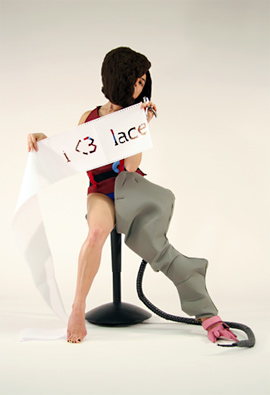

The Lace Card (For Ada Lovelace) is part of an ongoing series of works in which I perform computer bugs.
When computer programs where written on punch cards, a card with all of its holes punched was called a "lace card." Lacking structural integrity, a card full of holes could cause bugs in a machine by crumpling inside of the card reader and causing it to jam. Punch cards remained popular throughout IBM's heyday and even into the early 1980s, but they have a much earlier history.
In the early 1840s, Ada Lovelace became the world's first computer programmer by writing a program to calculate Bernoulli numbers using Charles Babbage's Analytical Engine. In Babbage's design, the Analytical Engine manipulated a mechanical calculator through programs encoded on loops of punch cards, a method of data storage and transfer that Babbage had borrowed from the Jacquard loom. Punch cards permitted ongoing calculations to inform subsequent operations. Recognizing the significance of this logical structure, Lovelace was able to develop several key features of modern programming languages, including looping, branching, conditional logic, and sequential control.
"The Lace Card" is a diptych photograph containing my message for Ada Lovelace.
When performing computer bugs, my body lends visibility to an otherwise invisible aspect of computer culture: the errors and terrors that cause systems to fail and logics to crash. My performances create material structures for engaging the abject side of technology's virtual fantasies. As a bug, I find that I have an innate proclivity for living as a parasite in technotopias' bowels.